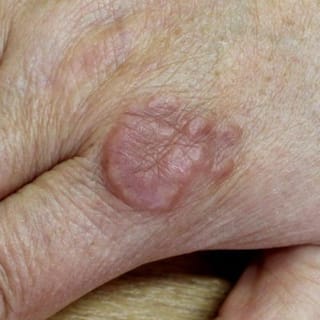 Granuloma annulare is a harmless type of skin rash that often presents with ring-shaped lesions. Although the condition can appear anywhere on the skin, favored sites are the hands, feet, elbows, and ankles. It is typically found in children, teenagers, and young adults. Granuloma annulare is more prevalent in women. The exact cause for the condition is unknown. Various treatment options are available with the most common being topical medications and/or intralesional steroid injections.
Granuloma annulare is a harmless type of skin rash that often presents with ring-shaped lesions. Although the condition can appear anywhere on the skin, favored sites are the hands, feet, elbows, and ankles. It is typically found in children, teenagers, and young adults. Granuloma annulare is more prevalent in women. The exact cause for the condition is unknown. Various treatment options are available with the most common being topical medications and/or intralesional steroid injections.
Disclaimer:
The information on this website is provided for educational and information purposes only and is not medical advice. Always consult with a licensed medical provider and follow their recommendations regardless of what you read on this website. If you think you are having a medical emergency, dial 911 or go to the nearest emergency room. Links to other third-party websites are provided for your convenience only. If you decide to access any of the third-party websites, you do so entirely at your own risk and subject to the terms of use for those websites. Neither Lydia M Evans, MD, nor any contributor to this website, makes any representation, express or implied, regarding the information provided on this website or any information you may access on a third-party website using a link. Use of this website does not establish a doctor-patient relationship. If you would like to request an appointment with a health care provider, please call our office at 914-238-1500.


